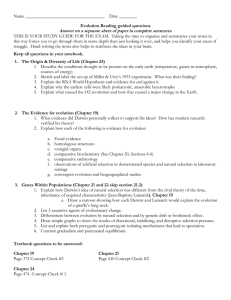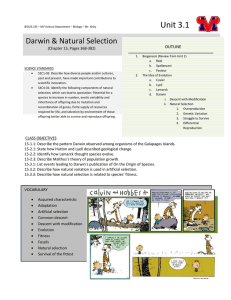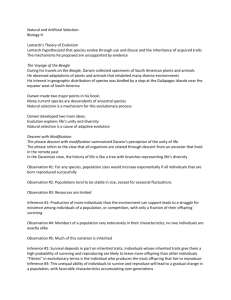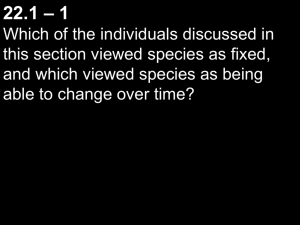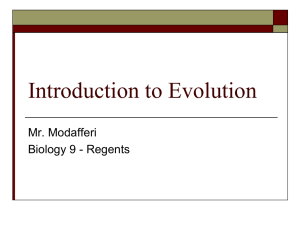LESSON OBJECTIVE FOCUS CONTENT
advertisement
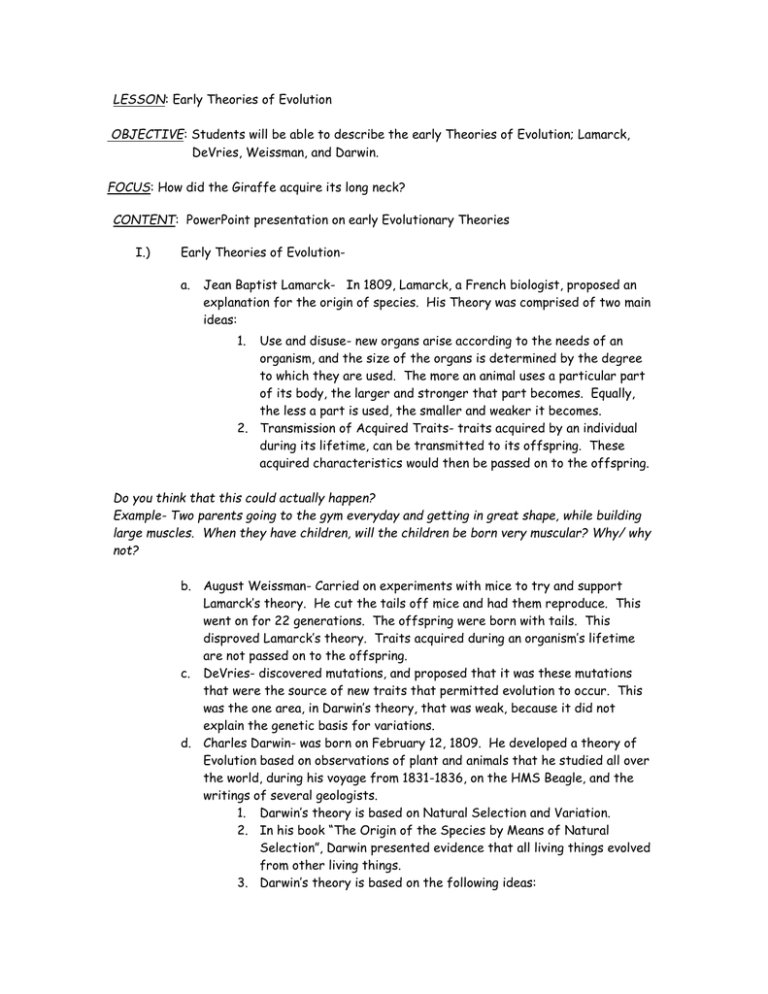
LESSON: Early Theories of Evolution OBJECTIVE: Students will be able to describe the early Theories of Evolution; Lamarck, DeVries, Weissman, and Darwin. FOCUS: How did the Giraffe acquire its long neck? CONTENT: PowerPoint presentation on early Evolutionary Theories I.) Early Theories of Evolutiona. Jean Baptist Lamarck- In 1809, Lamarck, a French biologist, proposed an explanation for the origin of species. His Theory was comprised of two main ideas: 1. Use and disuse- new organs arise according to the needs of an organism, and the size of the organs is determined by the degree to which they are used. The more an animal uses a particular part of its body, the larger and stronger that part becomes. Equally, the less a part is used, the smaller and weaker it becomes. 2. Transmission of Acquired Traits- traits acquired by an individual during its lifetime, can be transmitted to its offspring. These acquired characteristics would then be passed on to the offspring. Do you think that this could actually happen? Example- Two parents going to the gym everyday and getting in great shape, while building large muscles. When they have children, will the children be born very muscular? Why/ why not? b. August Weissman- Carried on experiments with mice to try and support Lamarck’s theory. He cut the tails off mice and had them reproduce. This went on for 22 generations. The offspring were born with tails. This disproved Lamarck’s theory. Traits acquired during an organism’s lifetime are not passed on to the offspring. c. DeVries- discovered mutations, and proposed that it was these mutations that were the source of new traits that permitted evolution to occur. This was the one area, in Darwin’s theory, that was weak, because it did not explain the genetic basis for variations. d. Charles Darwin- was born on February 12, 1809. He developed a theory of Evolution based on observations of plant and animals that he studied all over the world, during his voyage from 1831-1836, on the HMS Beagle, and the writings of several geologists. 1. Darwin’s theory is based on Natural Selection and Variation. 2. In his book “The Origin of the Species by Means of Natural Selection”, Darwin presented evidence that all living things evolved from other living things. 3. Darwin’s theory is based on the following ideas: a. Overproduction- within a population more offspring are born than can possibly survive to reproduce themselves. b. Competition- since the number of individuals in a population tends to remain constant, a struggle for survival is suggested. There is competition for food and shelter. c. Survival of the Fittest- the individuals that survive are the ones best adapted to exist in their environment due to the possession of variations that maximize their fitness. d. Reproduction- individuals that survive would then reproduce and transmit these variations to their offspring. e. Speciation- over time, adaptations are perpetuated in individuals and new species evolve from a common ancestor. Darwin’s theory did not explain the genetic basis for variation. MATERIALS: PowerPoint presentation Handout Laser disc Notes SUMMARY: Why was Lamarck’s theory invalid? Who proved Lamarck to be wrong? What was DeVries important discovery? What was the weakness in Darwin’s theory? HW: Answer questions on ditto. Extra Credit- Write a brief biography on either Darwin, Lamarck, DeVries, or Weissman.
